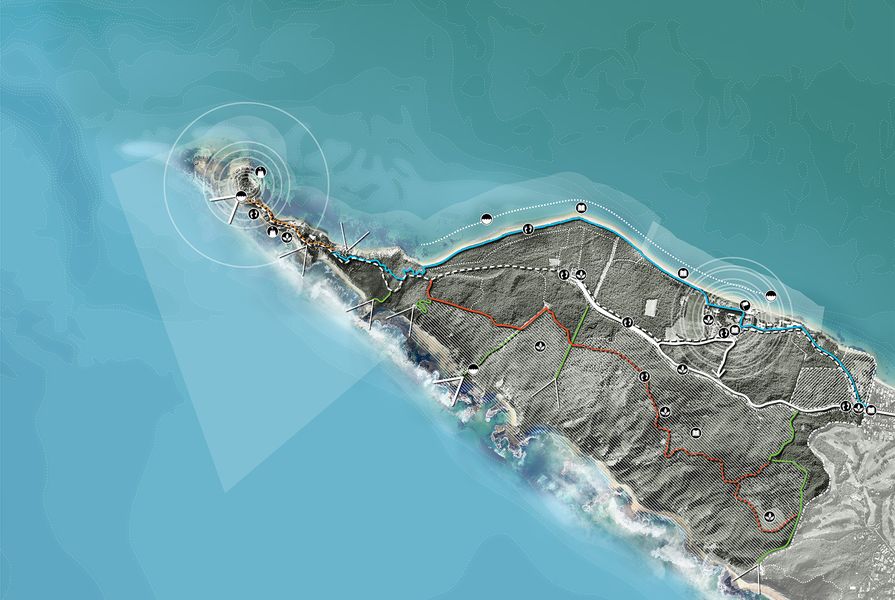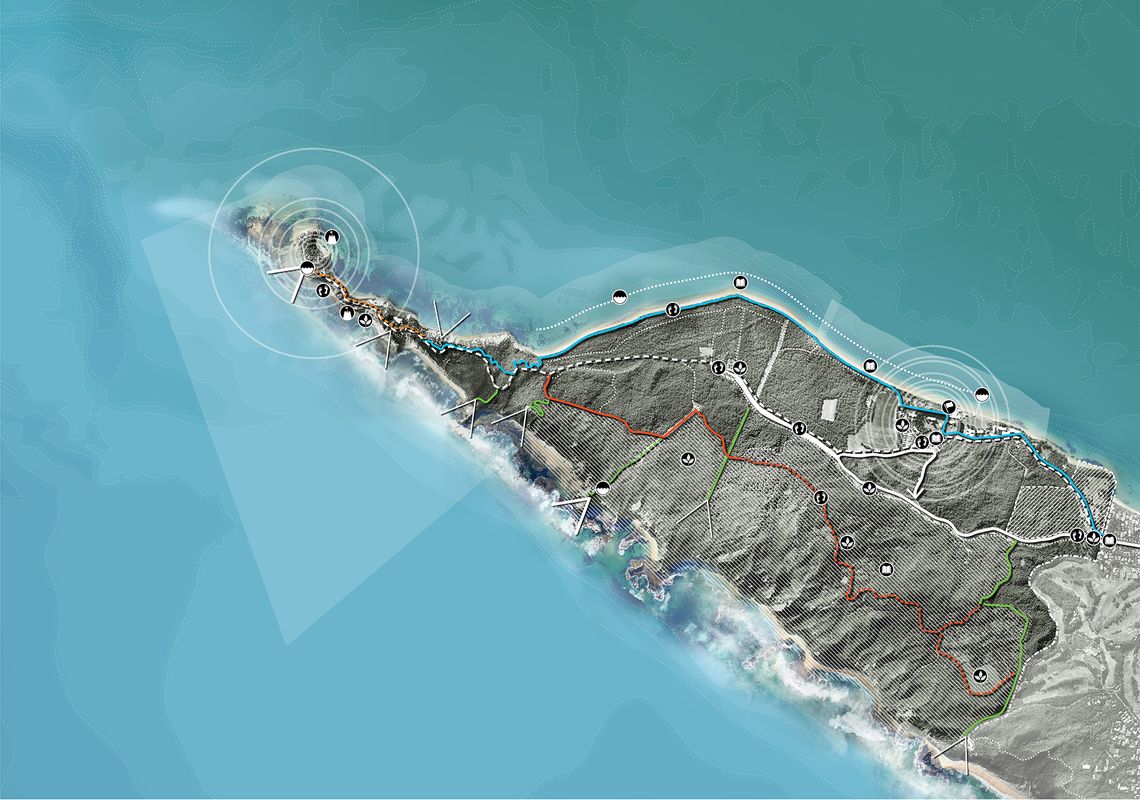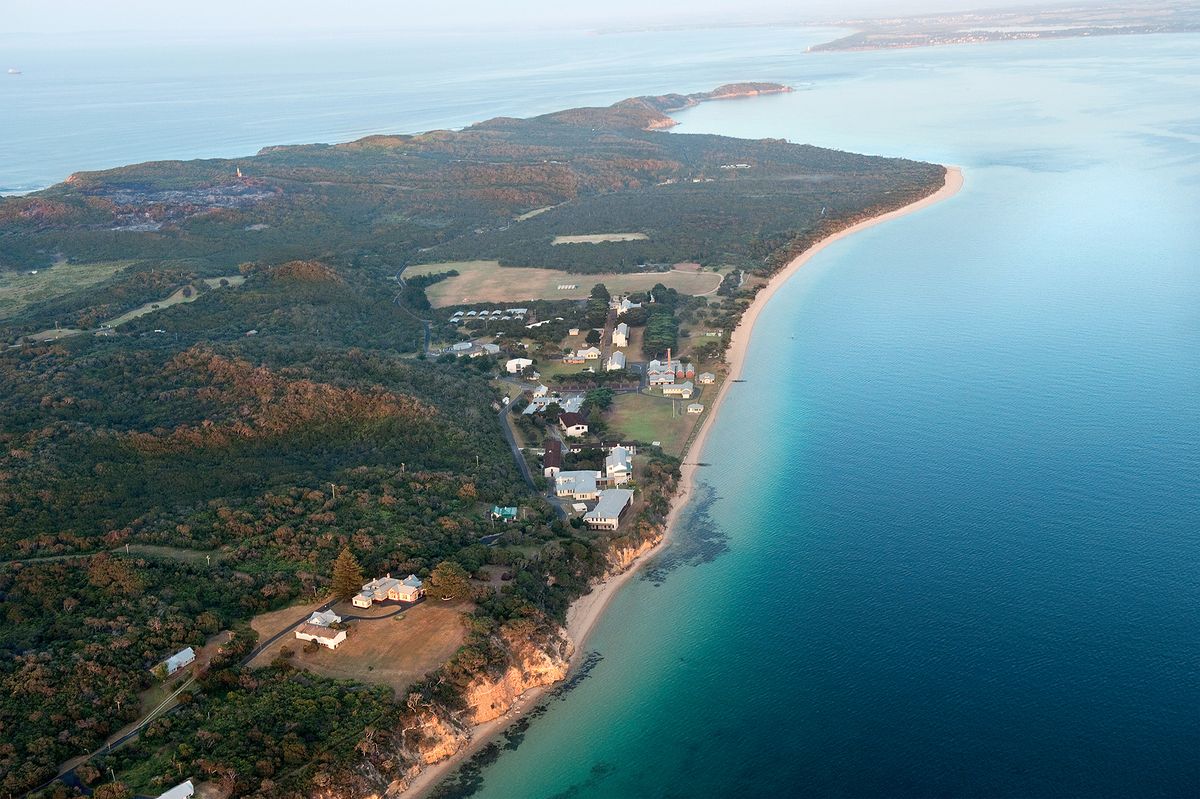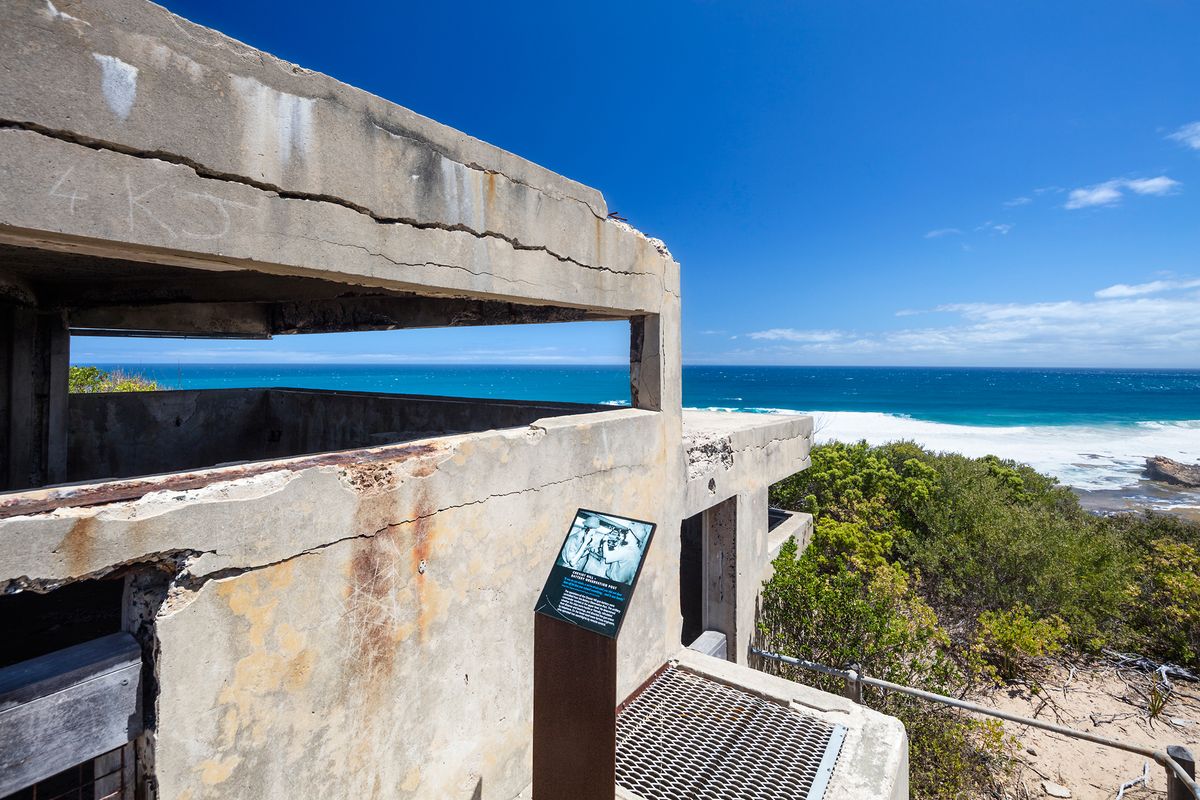Situated at the tip of the Mornington Peninsula dividing Port Phillip Bay and Bass Straight, Point Nepean holds deep cultural significance as a sacred place to its Traditional Owners, a landmark for European settlers, a gateway for the Australian military and defence, and most recently in its designation as a national park.
The Point Nepean National Park Master Plan aims to provide a clear vision for the future of the site – one that protects the area’s unique qualities and draws attention to the proliferation of local stories, past and present.
Jen Lynch, a landscape architect at TCL and one of the project team’s lead designers, speaks to Landscape Australia about the concepts and process behind the plan.
“The starting point [for the design] was just revisiting what is so remarkable about this site – its sublime physical qualities, but also its stories – and just how many stories are present here,” Lynch says. “The site is really significant from an Australian as well as a Victorian perspective, but what we also wanted to uncover was its significance to its Traditional Owners, people of the Kulin nation, as well.”
Community consultation undertaken in the lead-up to the final proposal was an integral part of the design process.
“Some of the key themes that came out [of that consultation] were that people wanted the site to be considered in a bigger context – its geographical context, including the whole peninsula and coastline, as well as in a broader cultural context that includes Indigenous culture,” says Lynch.
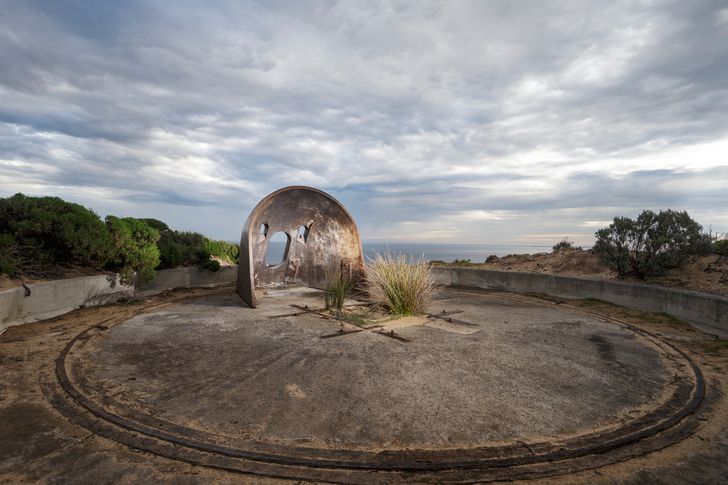
Cheviot Hill at Point Nepean.
Image: John Gollings
The overarching aim of TCL’s proposal is to ensure the site-specific qualities the team had identified during the research process were valued and protected, and that the multiplicity of site stories and their complexity was both appreciated and shared.
Structurally, the final masterplan is broken down into six key themes– Shared cultural landscape, Peninsula, Country, Coast, Quarantine and Defence – which identify elements of the site the designers wanted to highlight and frame. The designers then translated these themes into six key design principles which were used to develop a set of initiatives that could be implemented at ground level.
The main driver behind the design was the concept of a shared cultural landscape.
“The real core of the masterplan, across all themes and in our approach to the site and the interpretation and management of it, was the idea of these two cultural readings,” says Lynch. “We then considered how this might manifest through an interpretation strategy, a management approach, and developed projects that we intend will support these ideas.”
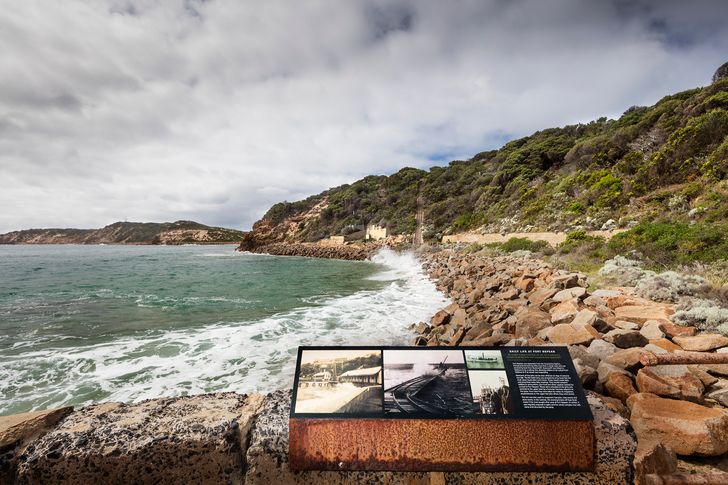
Extensive coastline at Point Nepean.
Image: John Gollings
While the current reading of the site is heavily skewed towards its colonial history and meaning, the designers hope the initiatives included in the plan will elevate the Traditional Owners’ understanding of the site, and encourage a dual reading of the site as Country as well as national park.
“We’ve tried to carry that dual reading of the landscape into projects on-site for instance, the Caring for Country theme,” Lynch explains. “The plan proposes to broaden the idea of the land management, vegetation and ecologies on the site, so we can appreciate these aspects collaboratively through those two cultural readings.”
The eventual aim of the masterplan is for joint management of the site by its Traditional Owners and Parks Victoria.
While elevating the Indigenous significance of the site is a major objective of the final plan, the designers also wanted to draw attention to other stories of the area that were not immediately legible. As a place where annual journeys were once made by women, and there are stories that capture the last ice age and the formation of the bay, the site is a rich and multi-layered collage of other non-Indigenous and non-colonial narratives.
“Ultimately, the masterplan tries to set up, through its themes, visions and aspirations, that idea of exchange or collaboration between various cultural understandings of place,” says Lynch.
View the Point Nepean Final Masterplan on the Parks Victoria website here.

